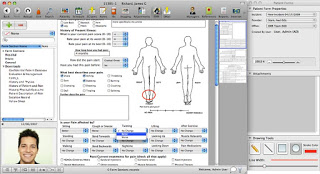Visual disability can occur in people of all ages. It can range from partial visual impairment to complete vision loss. These conditions pose challenges and affect their lives due to limitations to their educational attainments, profession, independence, and even doing household chores.
Modern advancements in science and technology have given individuals with visual disabilities a chance to navigate places, live independently, and have successful careers. Depending on the type and severity of the condition, surgical and non-surgical solutions are being offered to help them achieve a more comfortable life.
Proper knowledge and understanding are needed to address vision impairment and loss appropriately. Here are the following causes:
1. Stargardt Disease (STGD)
Stargardt disease or the Stargardt Macular Degeneration is a genetically inherited disease that primarily impairs the eye’s retina, a layer of thin and photosensitive tissues that lines the posterior eye. It’s responsible for detecting light, converting it to synaptic signals, and conveying it to the brain for visual recognition.
STGD damages a region in the central retina that controls visual acuity called the macula. As a result, the central vision is compromised, affecting object recognition, ability to read, and ability to drive. Total blindness is rare, but its progression can lead to heightened vision loss.
This condition usually develops in late childhood or adulthood, but prognosis varies from person to person. Modern advancement has led to the production of eSight’s electronic eyewear—a non-surgical alternative treatment for people with STGD. It’s clinically proven to enhance visual acuity and improve central vision effectively.
Custom-fit eyewear for comfortable daily use will enable STGD patients to navigate, read books, percept objects, and recognize faces. It’ll build them the confidence to live normal daily lives.
2. Age-Related Macular Degeneration (AMD)
The AMD has the same manifestations as STGD, but it’s not a genetically inherited disease. This macular degeneration is directly proportional to an individual’s age, causing visual difficulties in people over 55 years old. People with diabetes, hypertension, hyperlipidemia, as well as smokers are at high-risk and susceptible to developing AMD.
There are two types of AMD. Dry AMD causes gradual vision loss in the affected eye. There’s thinning of the macula due to age. This type is the more common one, affecting 70-90% of affected people. Early detection, vitamin consumption, and treatment can impede vision loss and prevent it from worsening.
A significant early sign of dry AMD is the presence of drusen, white or yellow sediments below the retina. Small amounts don’t cause vision problems, but when it accumulates over time, it may result in severe dry AMD or wet AMD.
On the contrary, wet AMD occurs when fluid and blood leak due to an abnormal blood vessel underneath the macula. An early sign is the perception of a straight line to a wavy one. Central vision loss begins following the scarring and damage of the blood vessels. Early detection can effectively treat this condition.
3. Glaucoma
Glaucoma is an eye disease caused by optic nerve damage and is commonly seen in older people. The increased fluid pressure leads to partial vision loss or total blindness. Patients with a family history of glaucoma have high risks of acquiring one.
The slow but progressive fluid accumulation in the eyes makes it unnoticeable until later. Studies show that some glaucoma cases appear to have normal eyesight. Hence, a regular eye exam is necessary, especially for aging individuals. Early detection can delay the progression of visual loss and control pain; however, total blindness is irreversible.
4. Diabetic Retinopathy (DR)
Diabetic retinopathy is a complication resulting from having diabetes mellitus (DM) type 1 or type 2. Viscous and reduced blood flow creates damage to the retina’s blood vessels. Lifestyle modification and DM treatment adherence are vital.
There are four stages of DR: mild, moderate, severe, and proliferative retinopathy. The treatment measures for the first three stages of DR are to control blood glucose, blood cholesterol, blood pressure, and smoke cessation. The fourth stage only has treatments addressed to lessen visual loss but not a concrete cure for DR.
5. Cataract
A cataract happens when the eye’s lens becomes cloudy, resulting in blurred, hazy vision. It commonly occurs in older adults, but it can exist at birth in some cases. Overexposure to sunlight, diabetic individuals, smokers, and alcoholics are at high risk of developing cataracts.
Unlike other conditions, treatments for cataracts are extensively available and clinically proven to be successful. Full recovery is often guaranteed with early detection and proper treatment.
Taking All Into Account
Stargardt disease, age-related macular degeneration, glaucoma, diabetic neuropathy, and cataracts are the five most common causes of vision impairment and loss. A regular comprehensive eye consultation is highly encouraged for those experiencing blurred visions, eye discharges, and partial vision loss.
Early detection and proper diagnosis are important to finding appropriate medications and treatments. Nowadays, people can take advantage of modern advancements such as high-tech eyewear, laser treatments, and medical procedures in correcting vision impairment and loss.







